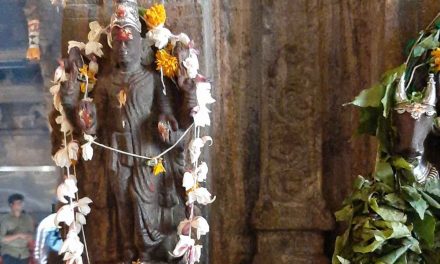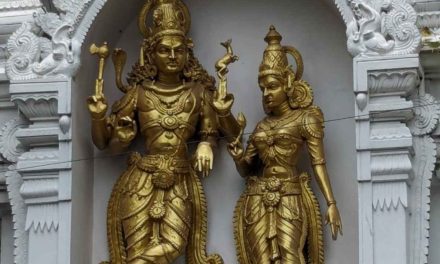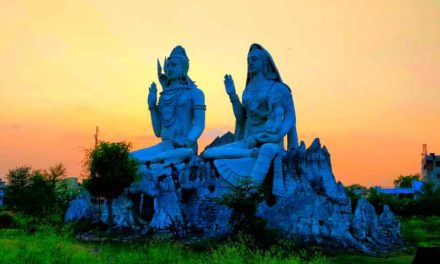The Subala Upanishad is a short but important text in the Hindu tradition. It is part of the Shukla Yajurveda, and it is thought to have been composed in the early centuries CE. The Upanishad is named after its main character, Subala, who is a student of the sage Raikva.
The Subala Upanishad begins with a question from Subala, who asks Brahma about the origin and nature of the self, the world, and the Brahman. Brahma replies that they are all manifestations of Narayana, the supreme lord, who is also known as Vishnu, Hari, Vasudeva, and other names. Narayana is the source of everything, the sustainer of everything, and the goal of everything. He is both transcendent and immanent, beyond all attributes and qualities, yet possessing infinite forms and powers. He is both one and many, both personal and impersonal, both manifest and unmanifest.
Brahma then explains that Narayana created the world from his own being, by projecting his power of maya, or illusion. Maya is the cause of ignorance, bondage, and suffering for all living beings, who are deluded by their identification with their bodies, senses, and minds. Maya also creates the diversity and multiplicity of the world, which conceals the unity and singularity of Narayana. However, Maya is not independent or real; it is dependent on and subservient to Narayana, who controls it by his will.
Brahma further reveals that Narayana created four types of living beings: devas (gods), asuras (demons), manushyas (humans) and tiryaks (animals). He also created seven progenitors (Prajapatis), who are responsible for populating the world with their offspring. The four types of living beings are divided into four classes (varnas), according to their qualities and duties: Brahmanas (priests), Kshatriyas (warriors), vaishyas (merchants) and Shudras (servants). The four classes are also related to the four stages of life (ashramas): brahmacharya (student), grihastha (householder), vanaprastha (retiree) and sannyasa (renunciant).
Brahma then instructs Subala on how to attain liberation from Maya and realize his identity with Narayana. He says that the means to liberation is yoga, which consists of three components: jnana (knowledge), bhakti (devotion), and karma (action). Jnana is the direct and intuitive knowledge of one’s true self, as Narayana, dispels ignorance and destroys attachment. Bhakti is the loving and faithful worship of Narayana as one’s lord, master, father, mother, friend, and beloved. Karma is the performance of one’s duties according to one’s class and stage of life, without any desire for results or rewards.
Brahma then describes the eight limbs of yoga, which are: yama (restraint), niyama (observance), asana (posture), pranayama (breath control), pratyahara (withdrawal), dharana (concentration), dhyana (meditation), and samadhi (absorption). He says that by practicing these limbs, one can purify one’s body, mind, and intellect, and prepare oneself for the highest state of yoga, which is samadhi. Samadhi is the state of complete absorption in Narayana, in which there is no distinction between subject and object, knower and known, seer and seen. Samadhi is also called kaivalya (isolation), moksha (liberation) or nirvana (extinction).
Brahma concludes his discourse by praising Subala for his sincere inquiry and bestowing his grace upon him. He says that whoever studies this Upanishad with faith and devotion will attain the supreme goal of yoga, which is union with Narayana. He also says that whoever teaches this Upanishad to others will be blessed with prosperity, happiness, and peace.
The Subala Upanishad is primarily concerned with the nature of reality and the path to liberation. It teaches that the ultimate reality is Brahman, the Absolute or Supreme Self. Brahman is beyond all names and forms, and it is the source of all creation. The individual soul (atman) is identical to Brahman, but it is mistakenly identified with the body and the mind. The goal of yoga is to realize this identity and to achieve liberation from the cycle of birth and death (samsara).
The Subala Upanishad describes a number of yogic practices that can help us achieve this goal. These practices include meditation, concentration, and breath control. The Upanishad also teaches the importance of ethical living and devotion to God.
One of the most important yogic practices described in the Subala Upanishad is meditation on the Self (atma-dhyana). This practice involves sitting in a comfortable position and focusing your attention on the breath. As you focus on the breath, you will gradually become aware of the presence of the Self within you. The Self is the source of peace and joy, and it is the only thing that is truly real.
Another important yogic practice described in the Subala Upanishad is concentration (dharana). This practice involves focusing your attention on a single object, such as a candle flame or a mantra. Concentration helps train the mind and make it more stable.
Breath control (pranayama) is also an important yogic practice. There are many different pranayama techniques, but all of them involve controlling the breath in some way. Pranayama helps to calm the mind and increase prana, the vital energy that flows through the body.
The Subala Upanishad teaches that the path to liberation is not easy, but it is possible for everyone. By practicing the yogic practices described in the Upanishad, we can gradually purify the mind and body and achieve union with the Self.
In addition to the yogic practices mentioned above, the Subala Upanishad also teaches the importance of ethical living and devotion to God. The Upanishad teaches that we should avoid harming others, both physically and mentally. We should also cultivate positive qualities such as compassion, love, and forgiveness. Devotion to God can also help us achieve liberation.
The Subala Upanishad is a valuable resource for anyone who is interested in the path to liberation. It offers clear and concise teaching on the nature of reality and the yogic practices that can help us to achieve union with the Self. If you are serious about your spiritual journey, I encourage you to study the Subala Upanishad and put its teachings into practice.
The Yoga of the Subala Upanishad
The Subala Upanishad outlines a comprehensive approach to yoga, emphasizing the importance of inner harmony and self-knowledge. It introduces four key types of yoga, each designed to address different aspects of the human experience:
- Karma Yoga (Path of Action): The Upanishad suggests that individuals can attain spiritual growth by performing selfless actions. By acting without attachment to the fruits of their actions, seekers can transcend the limitations of the ego and experience a deeper connection with the divine.
- Bhakti Yoga (Path of Devotion): Bhakti yoga is described as the path of heartfelt devotion to a chosen deity or the divine. The Subala Upanishad emphasizes the power of love and devotion in transcending the ego and establish a profound connection with the spiritual realm.
- Jnana Yoga (Path of Knowledge): This path focuses on the pursuit of self-knowledge and wisdom. According to the Upanishad, the true self, or Atman, can be realized through a deep understanding of one’s inner nature. It encourages seekers to contemplate the nature of reality and their own existence.
- Dhyana Yoga (Path of Meditation): Meditation is the heart of the Subala Upanishad’s teachings. It advocates for the practice of meditation as a means to calm the mind and access higher states of consciousness. Through meditation, individuals can experience the unity of the self with the universal consciousness, known as Brahman.
Inner Harmony and Self-Realization
At the core of the Subala Upanishad’s teachings is the idea that inner harmony is the key to self-realization. The various paths of yoga presented in the Upanishad are not separate but interconnected, like threads woven into a tapestry of spiritual growth. To attain self-realization, one must balance and integrate these paths, recognizing that they all lead to the same ultimate truth.
Inner harmony is achieved when the mind, body, and spirit are aligned with the divine. This alignment is not a static state but an ongoing process of self-discovery and self-transcendence. The Subala Upanishad teaches that through dedicated practice and unwavering devotion, individuals can gradually dissolve the ego and realize their true nature as infinite and interconnected with all of creation.
In conclusion, the Subala Upanishad offers a profound perspective on the yoga of inner harmony and self-realization. Its teachings emphasize the importance of integrating different paths of yoga and cultivating inner harmony to transcend the limitations of the ego. While it may not be as widely known as some other ancient texts, the wisdom of the Subala Upanishad continues to inspire seekers on their journey towards self-discovery and spiritual enlightenment. By delving into its teachings, we can uncover valuable insights that can guide us on our path to inner peace and harmony.





